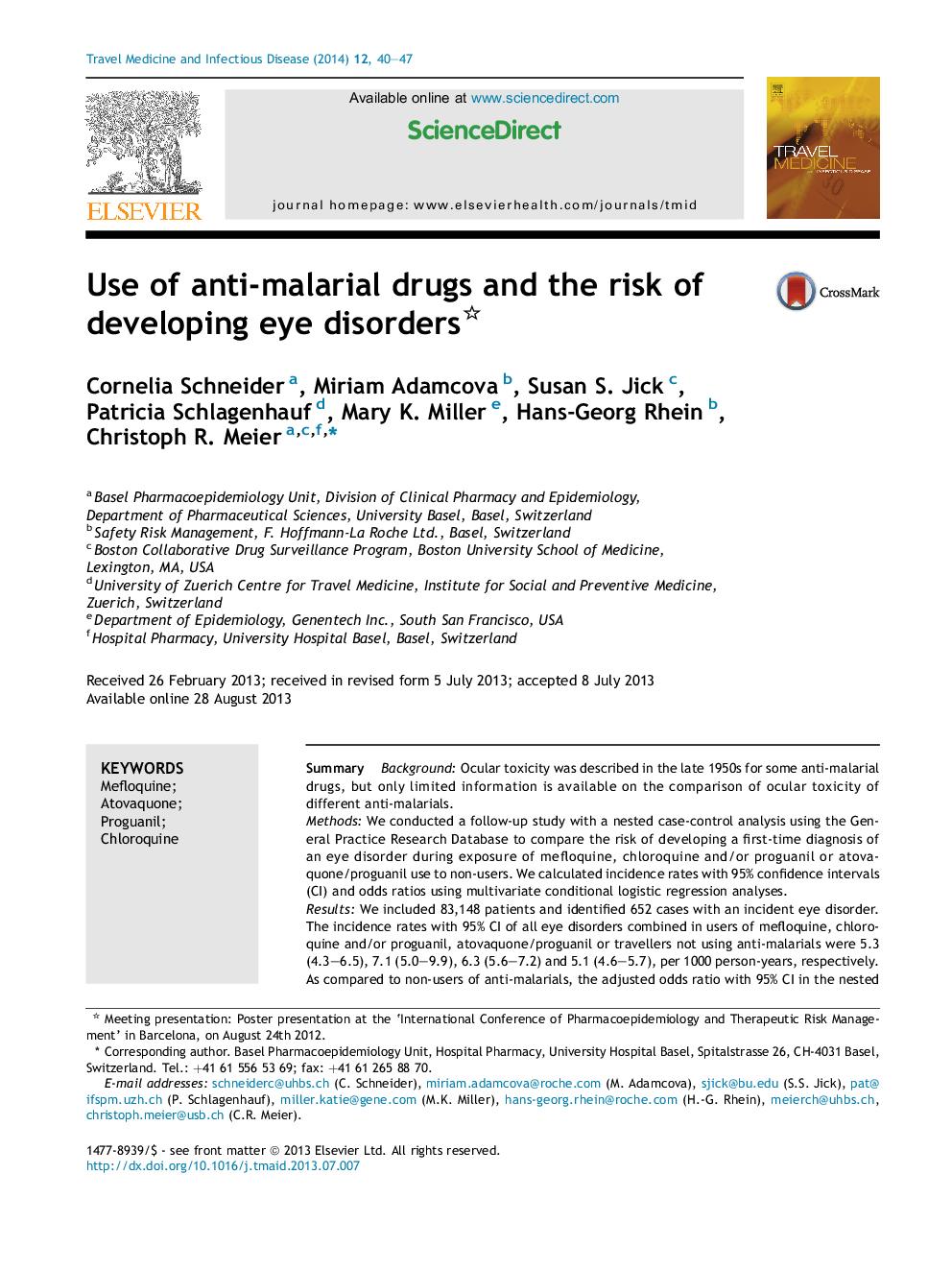| Article ID | Journal | Published Year | Pages | File Type |
|---|---|---|---|---|
| 3393027 | Travel Medicine and Infectious Disease | 2014 | 8 Pages |
SummaryBackgroundOcular toxicity was described in the late 1950s for some anti-malarial drugs, but only limited information is available on the comparison of ocular toxicity of different anti-malarials.MethodsWe conducted a follow-up study with a nested case-control analysis using the General Practice Research Database to compare the risk of developing a first-time diagnosis of an eye disorder during exposure of mefloquine, chloroquine and/or proguanil or atovaquone/proguanil use to non-users. We calculated incidence rates with 95% confidence intervals (CI) and odds ratios using multivariate conditional logistic regression analyses.ResultsWe included 83,148 patients and identified 652 cases with an incident eye disorder. The incidence rates with 95% CI of all eye disorders combined in users of mefloquine, chloroquine and/or proguanil, atovaquone/proguanil or travellers not using anti-malarials were 5.3 (4.3–6.5), 7.1 (5.0–9.9), 6.3 (5.6–7.2) and 5.1 (4.6–5.7), per 1000 person-years, respectively. As compared to non-users of anti-malarials, the adjusted odds ratio with 95% CI in the nested case-control analysis for users of mefloquine, chloroquine and/or proguanil, or atovaquone/proguanil were 1.33 (1.01–1.75), 1.61 (1.06–2.45), and 1.25 (1.03–1.52), respectively.ConclusionsThe study provides evidence that there was an increased risk of eye disorders in users of all anti-malarials compared to non-users of anti-malarials.
